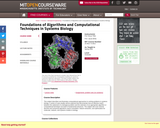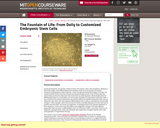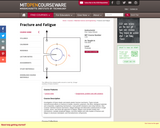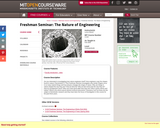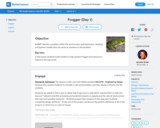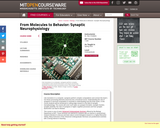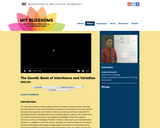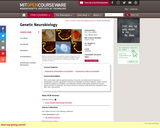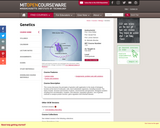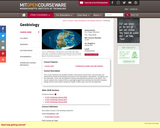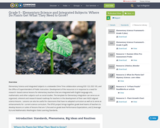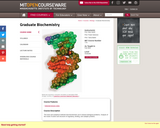Our goal is to create high-quality, freely available science instructional materials aligned to the NGSS for elementary through high school. Our development work began at the middle school level, and will grow to include full course materials for elementary through high school with grades 6-8 completed in 2022 and high school in 2024. As science educators, we endeavor to develop science classroom materials that provide equitable learning opportunities for historically disenfranchised students.
The OpenSciEd Instructional Model uses a storyline approach – a logical sequence of lessons that are motivated by students’ questions that arise from students’ interactions with phenomena. Each OpenSciEd unit undergoes an 18-month development process that includes external reviews, a robust field test, and revision. After the materials are evaluated by NextGenScience’s EQuIP Peer Review Panel and have received a quality rating, OpenSciEd makes those units freely available.
If your school system is considering using the OpenSciEd instructional materials, we would be happy to provide a presentation and answer any questions you may have.
Request a Presentation
Elementary School ScienceWe will open a Request for Qualifications (RFQ) process for elementary development in Summer/Fall 2021 and the development of materials will start in late 2021.
Organizations interested in developing the science classroom materials will be asked to submit a response to our Request for Qualifications (RFQ) in Summer/Fall 2021. This RFQ will ask interested parties to assemble a team who are able and interested in developing elementary school science materials designed for the Next Generation Science Standards (NGSS). The team chosen for this development will work within OpenSciEd’s structure of partnering with states to provide direction and field testing in order to bring practitioner voices to the forefront of the development process as well as build demand for high-quality curriculum and professional learning materials. We hope to have a diverse group of organizations that are interested in creating free online science resources for teachers!
Register for Updates
Middle School Science Classroom MaterialsOur middle school science materials and free online science resources for teachers are phenomenon-based, three-dimensional units that prioritize student coherence and equitable science sensemaking. The units are developed with teacher and student voices from across the country informing the selection of the phenomena and the storyline of the unit. Throughout our units, students develop their ability to solve problems, ask and answer questions, and argue from evidence.
The OpenSciEd Middle School science program follows the OpenSciEd Scope and Sequence and addresses all of the middle school NGSS standards.
Grade 6 units:
6.1 Light & Matter
6.2 Thermal Energy
6.3 Weather, Climate & Water Cycling
6.4 Rock Cycling and Plate Tectonics (available Fall 2021)
6.5 Natural Hazards (available Summer 2021)
6.6 Cells and Systems (available Winter 2022)
Grade 7 Units
7.1 Chemical Reactions & Matter
7.2 Chemical Reactions & Energy (available Summer 2021)
7.3 Metabolic Reactions
7.4 Matter Cycling & Photosynthesis
7.5 Ecosystem Dynamics (available Fall 2021)
7.6 Natural Resources & Human Impact (available Winter 2022)
Grade 8 Units
8.1 Contact Forces
8.2 Sound Waves
8.3 Forces at a Distance
8.4 Earth in Space (available Fall 2021)
8.5 Genetics (available Fall 2021)
8.6 Natural Selection and Common Ancestry (available Winter 2022)
High School Science Materials & Resources for TeachersThe development of our high school science classroom materials began in January 2021 and will include materials for Biology, Chemistry, and Physics courses with the Earth and Space Science standards woven throughout each. The full program will be available by January 2024 with units available starting in late 2022, including free online science resources for teachers.
The high school instructional materials and associated professional learning will be developed by the High School Development Consortium, led by the University of Colorado, Boulder. This consortium was selected as a result of a rigorous process that included both a Request for Qualifications and a Request for Proposals. To learn more about the process and the applications submitted, visit our Future Development page.
Register for Updates
COVID-19 & Health Equity UnitsThe COVID-19 pandemic provides a unique and real-life opportunity for students to explore the ways in which science and society are connected. Through each of the COVID-19 & Health Equity units, students explore how communities are impacted differently by the virus through the lens of historical inequities, and consider how they can take action to prevent further spread.
These four units are meant to be supplemental science classroom materials that can be integrated into the classroom at any point during the year. While designed for science educators, these units could be used as part of a health class, an advisory class, as part social studies or as a multidisciplinary unit. These free online science resources for teachers include integrated social-emotional learning and supports for teachers and families in addressing these emotional and essential topics. Learn more about the development of our COVID-19 science materials.
COVID-19 & Health Equity (K-2 Science)
COVID-19 & Health Equity (3-5 Science)
COVID-19 & Health Equity (Middle School Science)
COVID-19 & Health Equity (High School Science)
How we Share our Instructional MaterialsTeachers know their students and their classrooms best. That’s why OpenSciEd creates high quality instructional resources that meet the highest learning standards and can easily be tailored based on the individual needs of students. Because of the flexibility of the open source Google Apps for Education platform, we host most of our materials in Google Docs, Slides, and Sheets. We encourage teachers to copy our resources and modify them to suit their classroom needs.
For some of our materials in the OpenSciEd Curriculum, we also offer a bulk downloader tool, which allows you to download full units of content to your own Google Drive. When you click “Copy to my Google Drive,” you give permission to the bulk downloader to create a new unit folder in your Google Drive. The units, when downloaded, are organized into folders by lesson and all the files are editable, rather than view only. This allows you to make any appropriate modifications to the OpenSciEd curricular materials without having to download each individual lesson and document. This also allows you to upload the unit content into Google Classroom more easily, as you will have an organized unit on your Drive from which you can create assignments and quizzes in Google Classroom. Please view the privacy policy related to the bulk downloader tool to understand how this tool accesses your Google Drive.
